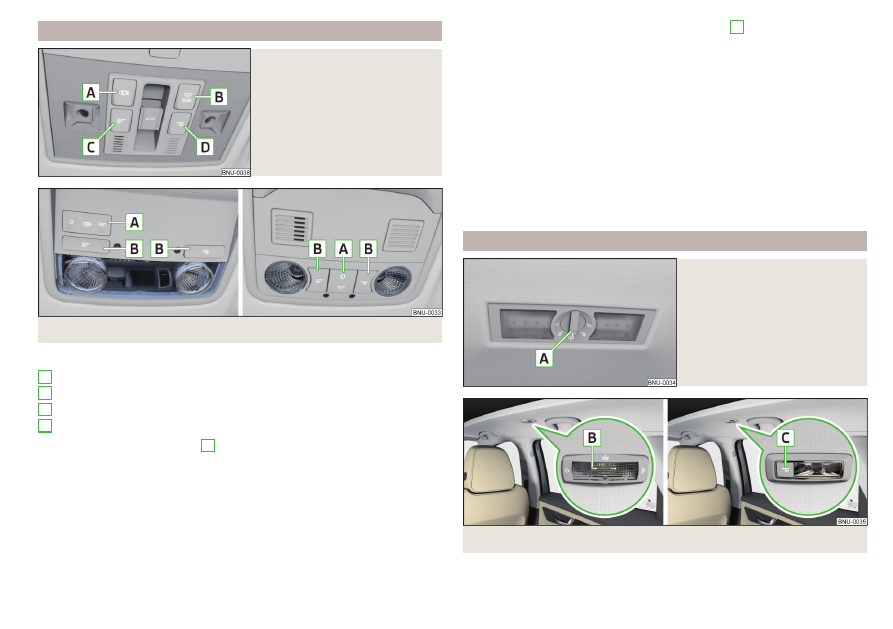Skoda Karoq (2019 year). Manual - part 5

Operation of the lights from the front seats
Fig. 68
Operation of the lights from the
front seats: Variant 1
Fig. 69 Operation of the front light: Version 2/version 3
Switching on/off (by pressing the relevant switch) - version 1
Automatic operation
Rear lighting
Reading light left
Reading light right
Positions of the rocker switch
A
- versions 2 and 3
Switch on
Automatic operation (centre position)
Switch off
There is no icon available for the centre position (automatic operation) in ver-
sion 3.
A
B
C
D
Switching on/off (by pressing the relevant switch
B
version 2 and 3)
Reading lamp left
Reading lamp right
Automatic operation - switch or position
The system is turned on when any of the following is present.
▶
The vehicle is unlocked.
▶
One of the doors is opened.
▶
The ignition key is removed.
The system is turned off when any of the following is present.
▶
The vehicle is locked.
▶
The ignition is switched on.
▶
About 30 seconds after all the doors have been closed.
Interior light, rear
Fig. 70
Interior lights at the rear: Variant
1
Fig. 71 Interior lights at the rear: Version 2/version 3
77
Lights and visibility